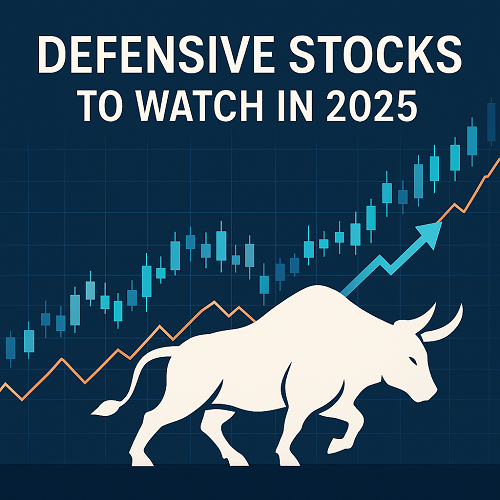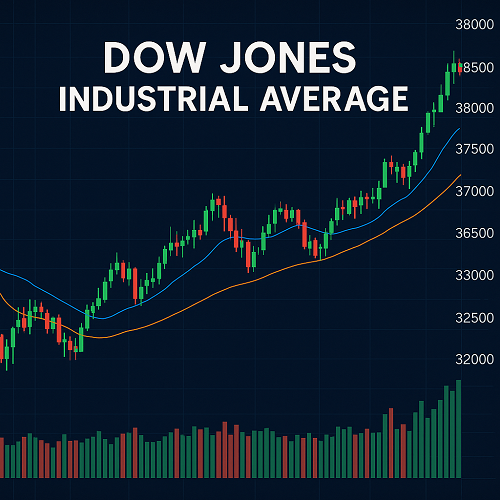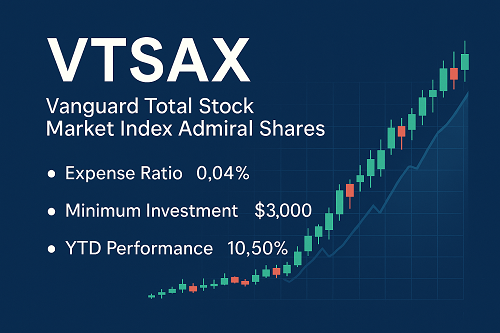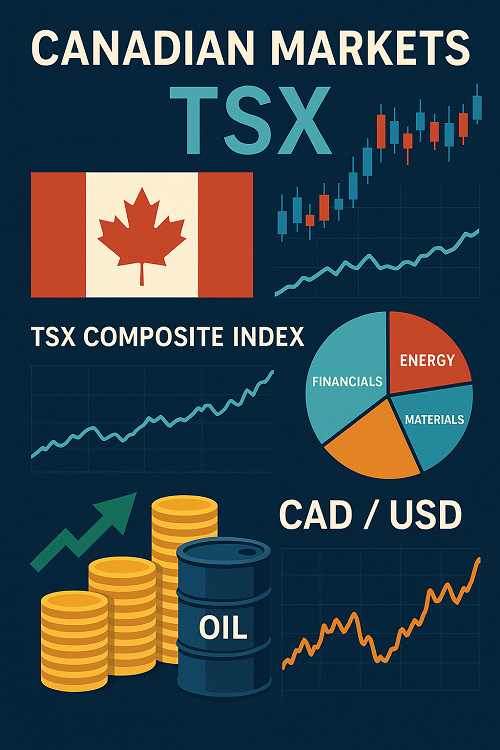A defensive stock (also called a non-cyclical stock) is one that tends to show relatively stable performance regardless of the economic cycle. It is less sensitive to macroeconomic swings, meaning it can resist downturns better than highly cyclical names.
Core Traits of Defensive Stocks
To rise above generic definitions, here are the hallmark traits you should look for:
- Low Beta / Low Volatility
A key metric: beta < 1 (i.e. less volatile than the market). Defensive stocks often have low correlation with the broader index, especially in stress periods. - Steady, Predictable Cash Flows & Earnings
Their revenues and profits are relatively stable. They often operate in industries where demand is inelastic — consumers need utilities, basic health care, staples, regardless of economic conditions. - High Dividend Yield & Consistent Payouts
Many defensive names distribute regular dividends, sometimes even in downturns. Dividend consistency is often a sign of financial health. - Strong Balance Sheets
Low debt, manageable leverage, robust interest coverage. When rates rise or revenue slows, strength on the balance sheet becomes a key buffer. - Essential Products / Services / Monopoly-Like Moats
The goods or services are necessary (food, energy, water, medical) and relatively insulated from competitive disruption. - Geographic / Business Diversification
Exposure across regions and business lines helps mitigate localized stress events (e.g. regulatory, currency shocks).
Why Defensive Stocks Matter in 2025
Markets heading into 2025 face several headwinds:
- Rising interest rates & tighter monetary policy
- Inflation pressures
- Geopolitical uncertainty / energy shocks
- Risk of global recession or earnings contraction
In such environments, defensive stocks serve as portfolio ballast — a way to reduce volatility and protect capital. Historically, they outperform or at least hold up better than cyclical names during drawdowns.
Additionally:
- They offer a yield cushion (dividends) when capital gains are weak.
- They act as a hedge if you rotate between cyclical/defensive depending on macro regime shifts.
- For traders, they can act as fallback positions during phases of market stress.
However, tradeoffs exist: lower upside in strong bull markets, potential valuation premiums, and sensitivity to policy shocks (e.g. rate hikes can hurt leveraged defensives).
How to Identify & Screen Defensive Stocks
To build a defensives portfolio you can rely on, use both quantitative and qualitative filters. Below is a screening framework.
Quantitative Filters
| Metric | Ideal Range / Behavior | Why It Matters |
|---|---|---|
| Beta / Volatility | Beta < 0.9 (or lower) | Low sensitivity to broad market swings |
| Revenue / EPS Variability | Low standard deviation over past 5–10 years | Predictability in operations |
| Free Cash Flow (FCF) Margin | Stable or growing margin | Ability to sustain dividends & buffer downturns |
| Debt / Equity & Interest Coverage | Leverage < threshold; interest coverage > 3–5× | Safety under stress |
| Dividend Yield + Payout Ratio | Yield above median (> market average), payout ratio < ~70% | Sustainability of dividends |
| Valuation Multiples | P/E, P/FCF, EV/EBITDA in reasonable band vs peers | Avoid overpaying in a “safe” name |
| Trailing & Forward Growth | Positive or stable growth | Even defensives must show path of stability or modest growth |
You can run this screening via platforms like Bloomberg, Capital IQ, or free tools (e.g. finviz, Screener.co, Seeking Alpha).
Qualitative Filters
- Competitive Moat — strong brand, regulated position, patents, network effects
- Regulatory Sensitivity / Political Risk — exposure to regulation or subsidy changes
- Geographic / Currency Exposure — hedged or diversified operations
- Management & Capital Allocation Track Record — consistency, discipline
- Innovation / Adaptability — ability to adapt, e.g. stable health companies introducing new drugs
Example Screening Workflow
- Universe: Global equities
- Pre-filter: Sectors known for defensive behavior (utilities, staples, healthcare, telecom)
- Quant filters: Beta, dividend yield, leverage, profit stability
- Qual filters: Moat, regulation, geographic risk
- Rank top 20 candidates, then perform deep due diligence
Top 10 Defensive Stocks to Watch in 2025 (Global Picks)
Below are 10 strong defensive stock candidates across geographies and sectors. Each includes rationale, strengths, risks, and valuation insight.
| Ticker / Name | Region | Sector | Rationale / Strengths | Key Risks & Considerations |
|---|---|---|---|---|
| Procter & Gamble (PG) | U.S. | Consumer Staples | Legendary household brands; stable demand; ~2.4% dividend yield (2025 estimates) | Currency risk, margin pressure via input costs |
| Johnson & Johnson (JNJ) | U.S. | Healthcare / Consumer / Pharma | Diverse operations; strong R&D, recurring revenue in medical devices & drugs | Litigation risk; regulatory scrutiny |
| The Coca-Cola Company (KO) | U.S. | Consumer Beverages | Global brand, distribution network, steady cash flow | Bottling cost inflation; changing consumer preferences |
| NextEra Energy (NEE) | U.S. | Utilities / Renewables | Stable regulated utility plus renewable growth segment | Rate sensitivity; capex demands |
| Unilever PLC (ULVR / UL) | U.K / Europe | Consumer Staples | Global footprint in essential goods; hedged exposure | Brexit / regulatory risk; input inflation |
| Nestlé SA (NESN) | Switzerland / EU | Consumer Staples / Food | Global leader in food & beverage staples; strong brand and distribution | Currency risk; health regulation trends |
| Sanofi (SNY) | France / EU | Pharmaceuticals / Healthcare | Leading in vaccines & specialty drugs; stable demand | R&D risk; regulatory changes in Europe |
| Enel SpA (ENEL) | Italy / EU | Utilities / Energy | Regulated utility plus investment in renewables | Country-specific regulatory / political risk |
| Tokyo Gas Co., Ltd. (9531.T) | Japan / Asia | Utilities / Energy | Essential energy provider in Japan; stable domestic demand | Exposure to fuel prices; energy transition pressures |
| KDDI Corporation (9433.T) | Japan / Asia | Telecom / Utilities | Telecom + utility hybrid; stable service demand | Competition, tech disruption risk |
Why these picks stand out
- They combine steady cash flow, diversified revenue, and relatively low volatility.
- Spread across geographies to buffer regional headwinds.
- They operate in sectors (staples, utilities, healthcare) that typically hold up better in stress.
I encourage you to run your own valuations and risk checks for each, especially given local tax, currency, and regulatory contexts.
Sector Breakdown & Global Defensive Themes
Understanding how each sector behaves is crucial when constructing or rotating a defensive portfolio.
Consumer Staples
Staples like food, cleaning products, hygiene, and household goods are among the classic defensive sectors. Demand is relatively inelastic even in downturns.
Key risks: rising input costs, commodity inflation, regulation (sugar, health, environment).
Healthcare / Pharmaceuticals
Closely matches defense: medications, treatments, diagnostic services are often required regardless of growth.
Key risks: regulatory changes, patent cliffs, R&D failures, pricing pressure.
Utilities & Renewables
Electricity, water, gas are necessities. Utilities offer regulated revenues; renewables provide optional growth.
Key risks: interest rate sensitivity, regulatory reform (grid, subsidies), capex burden.
Telecom & Infrastructure
Telecom companies with stable service demand (internet, mobile) often behave defensively. Infrastructure (pipelines, data centers) can also provide stable cash flows.
Key risks: tech disruption, regulatory changes, capital intensity.
Geographic / Macro Defensive Themes
- Emerging market staples / utilities: can act defensively in local markets but carry currency risk.
- Diversified multinational defensives: companies with cross-border revenue reduce region-specific cyclical exposure.
- Hedged / dividend or ADR structures help mitigate foreign exchange drag.
Trading & Investment Strategies with Defensive Stocks
It’s not enough to just own defensive stocks — you can actively trade, hedge, and rotate them for better performance.
Entry Timing & Trade Setup
- Look for pullbacks vs. trend — when defensives dip with the broader market but recover quickly.
- Watch for relative strength vs. cyclicals — shift when defensive names start outperforming.
- Use technical overlays: support zones, moving average crossovers as triggers.
Position Sizing & Stop Loss
- Because defensives are lower volatility, you can allocate a slightly larger % within risk limits.
- You can use wider stops to avoid noise (e.g. 3–4% rather than 2%).
- Hedge exposure by pairing with cyclical exposure or using options.
Hedging / Overlay
- Covered calls on defensive positions can generate extra income in sideways markets.
- Use protective puts if volatility spikes or you fear sharp downside.
- Pair a defensive long with short cyclical holdings for rotation trades.
Rotation Strategy
- In expansion phases: reduce defensive weight and tilt toward growth/cyclicals.
- In contraction phases: increase defensive allocation.
- Use macro indicators (yield curve, consumer sentiment, PMI, leading indicators) to guide rotation timing.
Rebalancing & Discipline
- Rebalance once or twice a year: trim outperformers, add to underweights.
- Avoid temptation to chase overbought defensives — discipline matters more than timing.
Risks, Pitfalls & What Could Go Wrong
No strategy is foolproof. Defensive stocks carry their own set of risks:
- Valuation premium / overpaying — sometimes “safety” gets priced in heavily.
- Interest rate sensitivity — high leverage defensives or utilities react badly to rising rates.
- Regulatory / policy shocks — utility deregulation, drug pricing reform, environmental mandates.
- Dividend cuts in severe stress — even safe names may slash payouts in extreme downturns.
- Currency & geopolitical risk — global names may suffer from FX drag or local disruption.
- Crowded trade / liquidity risk — many investors flock to defensives in panic, leading to overextension.
- Innovation disruption — sometimes even stable sectors get disrupted (e.g. clean energy changing power utilities, telehealth disrupting traditional care).
Historical Case Studies & Performance
2008–2009 Financial Crisis
Many defensive names held up better than broader indices. For example, leading utilities and staples had smaller drawdowns and earlier recoveries.
COVID-19 Crash (2020)
Consumer staples and healthcare names dropped less sharply and rebounded faster. Companies producing essential goods, household items, or medical supplies were more resilient.
Comparing cyclical vs defensive drawdowns shows that defensives often reduce max drawdown by tens of percentage points over full cycles.
FAQs — What Investors Ask about Defensive Stocks
Q: Are defensive stocks “boring” or poor performers in bull markets?
A: They often underperform aggressive growth names during strong bull runs. But they shine in volatility, and the goal is protection and steady income — not always maximum upside.
Q: How much of a portfolio should be defensive?
A: That depends on risk tolerance and macro view. Many allocate 10–30% to defensives, increasing to 40–50% in risky regimes.
Q: What’s the difference between defensive and non-cyclical stocks?
A: They’re often used interchangeably. Non-cyclical usually means not tied to economic cycles, same as defensive.
Q: Can defensive stocks outperform in bull markets?
A: Rarely in sharp momentum phases. But in moderate bull or choppy markets, strong defensives with growth or innovation can outperform.
Q: Are defensive stocks a substitute for bonds?
A: They’re complementary, not substitutes. Bonds provide fixed income and principal protection; defensives add equity participation with lower volatility.
Internal Linking Suggestions & SEO Notes
Here are keyword phrases you can link to your own site sections or related articles:
- Dividend growth investing
- Recession-proof portfolio strategies
- Low volatility ETFs / funds
- Macro rotation strategies
- Risk management in equity portfolios
- Sector allocation tactics
- Protected / hedged equity strategies
Using those as anchor text to internal pages will help reinforce topical relevance.
Conclusion & Actionable Takeaways
- Defensive stocks are an essential component of resilient portfolios, especially heading into 2025’s uncertain terrain.
- Use both quantitative and qualitative filters to build a robust defensives watchlist.
- The Top 10 list above offers a global cross-section to consider, but always perform your own valuation, stress tests, and scenario analysis.
- For traders, combine defensives with technical signals and hedging overlays to exploit rotation or crisis phases.
- Stay disciplined with rebalancing, exit planning, and risk rules.





 XAUT-USD
XAUT-USD  AMD
AMD  MARA
MARA  SHOP
SHOP  BULL
BULL  CL=F
CL=F